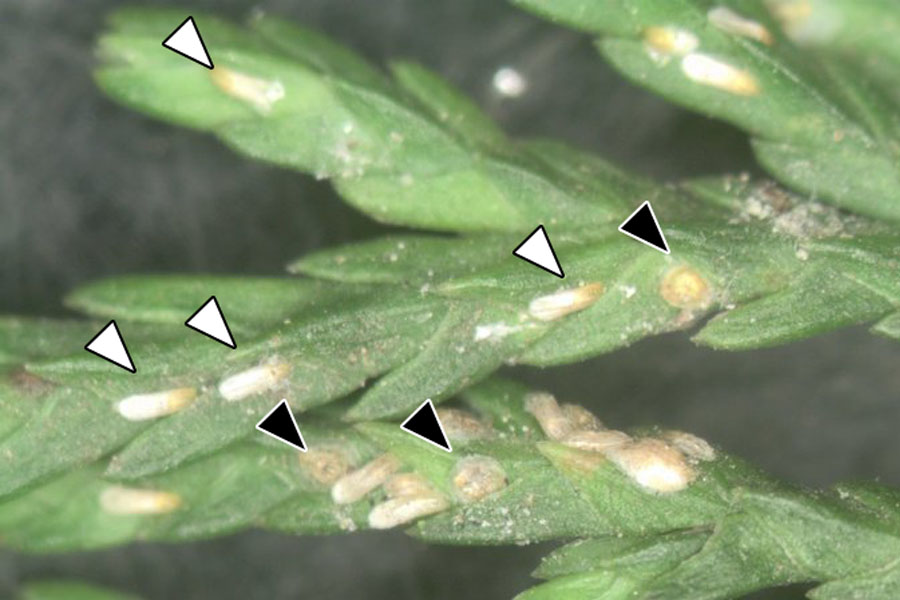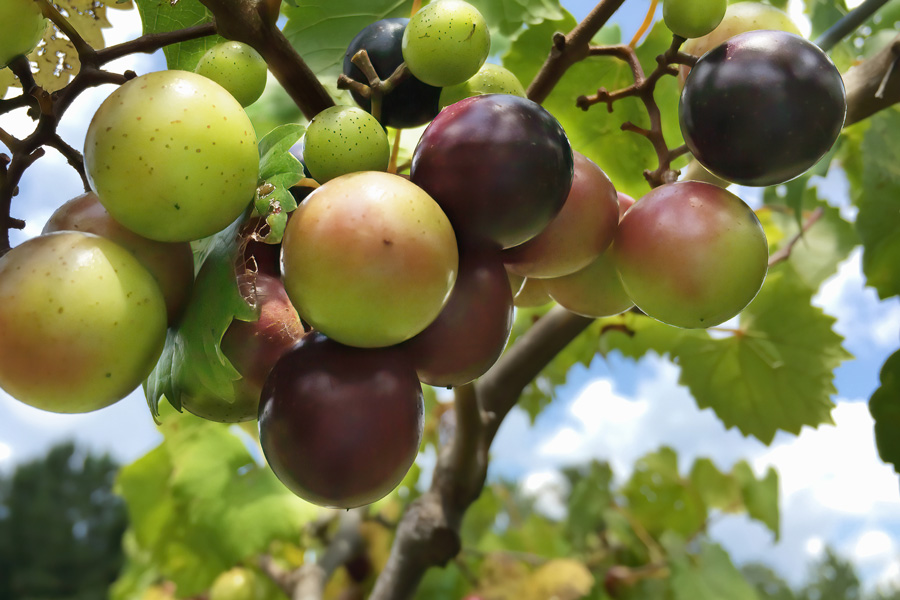Given below is a procedure to calculate the value of broiler litter based on prevailing retail selling prices of commercial fertilizers containing nitrogen (N), phosphorus (P) labeled as %P2O5 (the oxide expression used in the fertilizer industry) and potassium (K) labeled as %K2O. The calculation is based on an average broiler litter composition from the UGA Soil, Plant, and Water Laboratory of 3.1 percent N, 3.1 percent P2O5, and 2.8 percent K2O. Because different fertilizer materials contain different concentrations of N, P and K, the first step will be to calculate the cost per pound of each of the primary nutrients expressed as the N, P2O5 and K2O contained in them. Steps in this assessment are as follows:
STEP 1.
Determine the cost per pound of available nutrients.
- Calculate the cost per pound of nutrients as follows:
Cost per pound = retail price per ton divided by the pounds of nutrient per ton. - Nutrients per ton are given below for N, P and K fertilizers. For example:
Urea contains 920 lb of N per ton. If the cost is $600 per ton, then the cost per pound is $600/920 = $0.65 per pound of N. Another example: If Muriate of Potash costs $960/ton, then the cost per pound is $960/1,200 = $0.80 per pound of K2O.
| Nitrogen Fertilizers | ||
| Name | % N | lb N/ton |
| Ammonium Nitrate (34-0-0) | 34 | 680 |
| Ammonium Sulfate (21-0-0) | 21 | 420 |
| Urea (46-0-0) | 46 | 920 |
| UAN Solution (32-0-0) | 32 | 640 |
| Phosphorus Fertilizers | ||
| Name | % P2O5 | lb P2O5/ton |
| Triple Superphosphate (0-46-0) | 46 | 920 |
| Monoammonium Phosphate (11-52-0) | 52 | 1,040 |
| Diammonium Phosphate (18-46-0) | 46 | 920 |
| Ammonium Polyphosphate (10-34-0) | 34 | 680 |
| Potash Fertilizers | ||
| Name | % K2O | lb K2O /ton |
| Muriate of Potash (0-0-60) | 60 | 1,200 |
| Sulfate of Potash (0-0-50) | 50 | 1,000 |
| Sulfate of Potash Magnesia (0-0-20) | 22 | 440 |
STEP 2.
Determine the equivalent N, P2O5 and K2O values per ton of litter.
Using the calculated price for N, P2O5 and K2O in step one, go to the step two table below and find the equivalent fertilizer value per ton of litter that contains 3.1 percent N, 3.1 percent P2O5 and 2.8 percent K2O.
| Nitrogen (N) | Phosphate (P2O5) | Potash (K2O) | |||
| $/lb N | $/ton PL* | $/lb P2O5 | $/ton PL | $/lb K2O | $/ton PL |
| 0.4 | 12.40 | 0.4 | 22.32 | 0.3 | 16.80 |
| 0.5 | 15.50 | 0.5 | 27.90 | 0.4 | 22.40 |
| 0.6 | 18.60 | 0.6 | 33.48 | 0.5 | 28.00 |
| 0.7 | 21.70 | 0.7 | 39.06 | 0.6 | 33.60 |
| 0.8 | 24.80 | 0.8 | 44.64 | 0.7 | 39.20 |
| 0.9 | 27.90 | 0.9 | 50.22 | 0.8 | 44.80 |
| 1.0 | 31.00 | 1.0 | 55.80 | 0.9 | 50.40 |
| * Assumes N is 50% available in poultry litter (PL) not incorporated. If incorporated into soil, multiply by 1.3. | * Assumes P2O5 in PL is 90% available. | * Assumes K2O in PL is 100% available. | |||
STEP 3.
Add the total fertilizer value for N, P and K in dollars per ton of litter.
As an example, for N, P2O5 and K2O (valued at $0.60, $0.50 and $0.30 per pound, respectively), the litter value based only on the N, P and K values would be $18.60 + $27.90 + $16.80 = $63.30 per ton.
If fewer than three of the nutrients are needed for a particular crop and field, just add the value of the nutrients that are needed. For pastures that have received litter for many years, soil test P and K values may be high. If so, P and K fertilizers are not needed. In such a case, applying the litter to this pasture may be wasteful if only N is needed. In the example above, the P and K value was equal to $44.70 per ton, more than enough value to purchase an amount of N fertilizer equal to the N contained in one ton of the litter (valued at $18.60). In this case, the poultry farmer could then sell the litter to other farmers who need all three nutrients for crop production, and use the money from the sale to purchase N fertilizer for the pasture.
Special notes: Although there is additional value from micronutrients, it is difficult to determine because micronutrients are often in adequate amounts in agricultural soils. In addition, there is evidence that less agricultural lime is needed when poultry litter is used for crop production (Endale et al., USDA-ARS Southern Piedmont Experiment Station). We estimate this liming value at $3 per ton. The organic matter in litter also improves the soil.
The above calculations are based on average values of nutrients in broiler litter at the UGA laboratory. A web-based calculator is located at aesl.ces.uga.edu/fertcalc.htm for analysis values that differ from those given above. Broiler litter should be tested to accurately determine its nutrient content (contact your county agent for information about litter testing). Broiler litter is not as convenient to use as commercial fertilizer and includes additional costs for hauling and spreading that depend on local conditions.








